336 books about Electronics and 19
start with H
336 books about Electronics and 19
336 books about Electronics
19 start with H start with H
19 start with H start with H
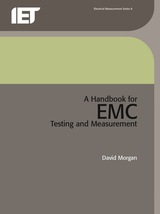
A Handbook for EMC Testing and Measurement
David Morgan
The Institution of Engineering and Technology, 1994
During the 1980s the worldwide interest in electromagnetic compatibility (EMC) grew rapidly with the introduction of legislation to control the growing interference problems generated by the increased use of electronic equipment in industry and in the home. The European directive harmonising EMC measurements gave particular impetus to manufacturers and importers of electrical and electronic equipment in Europe to understand EMC design techniques and verification procedures. This book explains how equipment can be verified by testing. It discusses the nature of EMC standards world wide and describes in detail testing methods and their conduct and accuracy. In addition to standard EMC testing, topics including electrostatic discharge, nuclear electromagnetic pulse and lightning are also discussed.
[more]

Handbook of Antenna Design, Volume 1
A.W. Rudge
The Institution of Engineering and Technology, 1982
- Authored by a multi-national group of antenna experts of international standing.
- Presents the principles and applications of antenna design, with emphasis upon key developments in the last 15 years.
- Fundamental background theory and analytical techniques explained in detail where appropriate.
- Includes extensive design data and numerous examples of practical application.
- Deals with a very wide range of antenna types, operating from very low frequencies to millimetre waves.
- New measurement techniques described in detail.
- Covers associated topics such as radomes, array signal processing and coaxial components.
- Includes design data for antennas for satellite and terrestrial communications, radar, mobile communications and broadcasting.
[more]

Handbook of Antenna Design, Volume 2
A.W. Rudge
The Institution of Engineering and Technology, 1983
- Authored by a multi-national group of antenna experts of international standing.
- Presents the principles and applications of antenna design, with emphasis upon key developments in the last 15 years.
- Fundamental background theory and analytical techniques explained in detail where appropriate.
- Includes extensive design data and numerous examples of practical application.
- Deals with a very wide range of antenna types, operating from very low frequencies to millimetre waves.
- New measurement techniques described in detail.
- Covers associated topics such as radomes, array signal processing and coaxial components.
- Includes design data for antennas for satellite and terrestrial communications, radar, mobile communications and broadcasting.
[more]
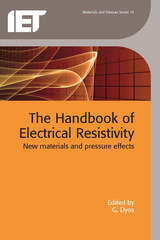
The Handbook of Electrical Resistivity
New materials and pressure effects
Gordon Dyos
The Institution of Engineering and Technology, 2012
This book updates and expands the editor's acclaimed Electrical Resistivity Handbook, bringing together advances in the field over the last two decades. In this period, much has been achieved in the fields of new materials and superconductivity.
[more]

Handbook of Microstrip Antennas, Volume 1
J.R. James
The Institution of Engineering and Technology, 1989
This book presents a wide ranging coverage of principles, state-of-the-art design and up-to-date applications of microstrip antennas; Includes detailed explanations of a variety of analytical techniques from transmission line theory to moments methods and their applications to CAD; Covers the numerous patch designs and array configurations giving many examples of practical applications; Discusses microstrip technology in detail including substrates, processing and environmental aspects; Addresses measurement methods particular to printed antennas such as substrate and connector characterisation and near field probing; Application areas covered include antennas for satellite terrestrial and mobile communications, conformal and aerospace antennas, phased arrays, hyperthermia applicators and millimetric antennas.
[more]

Handbook of Microstrip Antennas, Volume 2
J.R. James
The Institution of Engineering and Technology, 1989
This book presents a wide ranging coverage of principles, state-of-the-art design and up-to-date applications of microstrip antennas; Includes detailed explanations of a variety of analytical techniques from transmission line theory to moments methods and their applications to CAD; Covers the numerous patch designs and array configurations giving many examples of practical applications; Discusses microstrip technology in detail including substrates, processing and environmental aspects; Addresses measurement methods particular to printed antennas such as substrate and connector characterisation and near field probing; Application areas covered include antennas for satellite terrestrial and mobile communications, conformal and aerospace antennas, phased arrays, hyperthermia applicators and millimetric antennas.
[more]
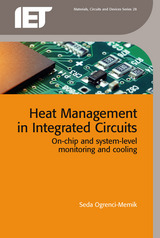
Heat Management in Integrated Circuits
On-chip and system-level monitoring and cooling
Seda Ogrenci-Memik
The Institution of Engineering and Technology, 2016
As integrated circuits get smaller and more complex, power densities are increasing, leading to more heat generation. Dealing with this heat is fast becoming the most important design bottleneck of current and future integrated circuits, where power envelopes are defined by the ability of the system to dissipate the generated heat. Thermal effects are forcing chip designers to apply conservative design margins, creating sub-optimal results. At a larger scale, cooling is the second most costly item in the electricity bills of well-designed high-performance computing and data centers, costing 30-50% of the total. Thermal monitoring and management in integrated circuits is therefore becoming increasingly important.
[more]
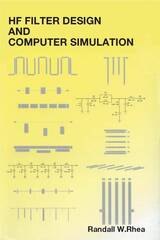
HF Filter Design and Computer Simulation
Randall W. Rhea
The Institution of Engineering and Technology, 1994
A book for engineers who design and build filters of all types, including lumped element, coaxial, helical, dielectric resonator, stripline and microstrip types. A thorough review of classic and modern filter design techniques, containing extensive practical design information of passband characteristics, topologies and transformations, component effects and matching. An excellent text for the design and construction of microstrip filters.
[more]
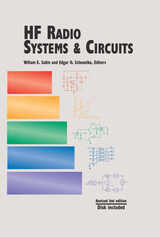
HF Radio Systems and Circuits
William E. Sabin
The Institution of Engineering and Technology, 1998
A comprehensive reference for the design of high frequency communications systems and equipment. This revised edition is loaded with practical data, much of which cannot be found in other reference books. Its approach to the subject follows the needs of an engineer from system definition and performance requirements down to the individual circuit elements that make up radio transmitters and receivers.
[more]
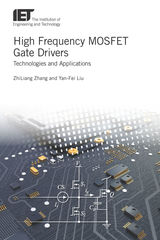
High Frequency MOSFET Gate Drivers
Technologies and applications
ZhiLiang Zhang
The Institution of Engineering and Technology, 2017
This book describes high frequency power MOSFET gate driver technologies, including gate drivers for GaN HEMTs, which have great potential in the next generation of switching power converters. Gate drivers serve as a critical role between control and power devices.
[more]
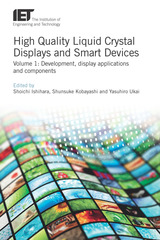
High Quality Liquid Crystal Displays and Smart Devices
Development, display applications and components, Volume 1
Shoichi Ishihara
The Institution of Engineering and Technology, 2019
A liquid-crystal display (LCD) is a flat-panel display or other electronically-modulated optical device that uses the light-modulating properties of liquid crystals. Liquid Crystal Displays are already widely used in consumer electronics, but research and development is still ongoing. The shifting focus of research follows a pattern of improved definition, increased display size, wider viewing angles and faster responses, with improvements in each area influencing the next. There is also growing interest in the use of liquid crystal materials in novel applications including sensing devices, spatial modulators and light-shielding windows.
[more]
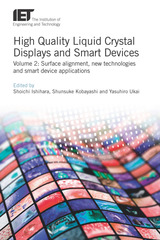
High Quality Liquid Crystal Displays and Smart Devices
Surface alignment, new technologies and smart device applications, Volume 2
Shoichi Ishihara
The Institution of Engineering and Technology, 2019
A liquid-crystal display (LCD) is a flat-panel display or other electronically-modulated optical device that uses the light-modulating properties of liquid crystals. Liquid Crystal Displays are already widely used in consumer electronics, but research and development is still ongoing. The shifting focus of research follows a pattern of improved definition, increased display size, wider viewing angles and faster responses, with improvements in each area influencing the next. There is also growing interest in the use of liquid crystal materials in novel applications including sensing devices, spatial modulators and light-shielding windows.
[more]
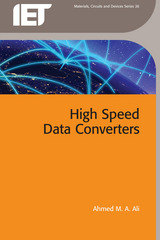
High Speed Data Converters
Ahmed M.A. Ali
The Institution of Engineering and Technology, 2016
High speed data converters represent one of the most challenging, important and exciting analog and mixed-signal systems. They are ubiquitous in our modern and highly connected world. Understanding and designing this class of converters require proficiency in analog circuit design, digital design, and signal processing. This book covers high speed data converters from the perspective of a leading high speed ADC designer and architect, and with a strong emphasis on high speed Nyquist A/D converters.
[more]
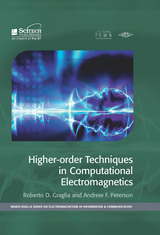
Higher-Order Techniques in Computational Electromagnetics
Roberto D. Graglia
The Institution of Engineering and Technology, 2016
Improvements in the accuracy, computational cost, and reliability of computational techniques for high-frequency electromagnetics (including antennas, microwave devices and radar scattering applications) can be achieved through the use of 'high-order' techniques. This book outlines these techniques by presenting high-order basis functions, explaining their use, and illustrating their performance. The specific basis functions under consideration were developed by the authors, and include scalar and vector functions for use with equations such as the vector Helmholtz equation and the electric field integral equation.
[more]

High-frequency Circuit Engineering
F. Nibler
The Institution of Engineering and Technology, 1996
This book is aimed at both practising and postgraduate engineers who are interested in the particular problems of high-frequency circuit design. It covers network parameters and how to work with them, various approaches to the use of conductors, and it introduces a large number of circuits using active devices (transistors).
[more]

A History of the World Semiconductor Industry
P.R. Morris
The Institution of Engineering and Technology, 1990
The book describes the development of semiconductor manufacture on a worldwide basis, from its early beginnings to date. Its approach is wide-ranging, encompassing early experimental work rooted in nineteenth century science, and it includes a brief historical review of the thermionic valve, which played an important part in the genesis of the semiconductor industry. The contents include a description of the establishment and subsequent development of semiconductor manufacture within the various nation states. Although not a technical treatise, major device types and manufacturing processes used in semiconductor fabrication are outlined. Factors affecting the performance of the industry within the major national participants are discussed, and the relationship of the industry to science and technology is also considered.
[more]

Human Factors for Engineers
Carl Sandom
The Institution of Engineering and Technology, 2004
This book introduces the reader to the subject of Human Factors and provides practical and pragmatic advice to assist engineers in designing interactive systems that are safer, more secure and easier to use - thereby reducing accidents due to human error, increasing system integrity and enabling more efficient process operations. The book discusses human factors integration methodology and reviews the issues that underpin consideration of key topics such as human error, automation and human reliability assessment. The book also examines design considerations, including control room and interface design, and acceptance and verification considerations.
[more]
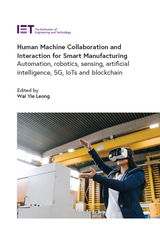
Human Machine Collaboration and Interaction for Smart Manufacturing
Automation, robotics, sensing, artificial intelligence, 5G, IoTs and Blockchain
Wai Yie Leong
The Institution of Engineering and Technology, 2022
Advanced technologies such as robotics, 5G mobile communications, IoT, cloud computing and wireless sensor networks have had a huge impact and influence on manufacturing, with an increased collaboration between humans and smart systems. As the manufacturing process becomes more automated using real-time data, communication systems, Artificial Intelligence (AI) techniques and robotics feed data back into the manufacturing process. This enables the design of products that are more customized and personal, and leads to a more competitive, efficient and value-added production process by reacting more quickly to technical or human errors to avoid product and system damage while increasing workplace safety, and reducing waste, pollution, and associated costs.
[more]

Hypertext and the Female Imaginary
Jaishree K. Odin
University of Minnesota Press, 2010
In Hypertext and the Female Imaginary, Jaishree K. Odin reveals how media that use hypertextual strategies of narrative fragmentation provocatively engage questions of gender or cultural difference. Odin addresses hypertext on two levels: as an artistic technique in electronic or film narratives and as a metaphor for describing the complexity of postmodernism in which different cultures, discourses, and media are in continual interaction with one another.
Investigating the work of Trinh T. Minh-ha, Judy Malloy, Shelley Jackson, Stephanie Strickland, and M. D. Coverly, Odin demonstrates how these writers apply hypertextual strategies to subversively convey difference. Through her readings of various transformative hypertext narratives by women writers/artists, she pursues the question of what constitutes empowering descriptions of the world in a technology-mediated culture where the dominant discourse is turning everything into the same.
Using feminist as well as postcolonial perspectives, she explores the embodied state of the human as reflected in critically aware contemporary narratives and examines how these works consider what it means to be human in the twenty-first century.
[more]
READERS
Browse our collection.
PUBLISHERS
See BiblioVault's publisher services.
STUDENT SERVICES
Files for college accessibility offices.
UChicago Accessibility Resources
home | accessibility | search | about | contact us
BiblioVault ® 2001 - 2024
The University of Chicago Press









